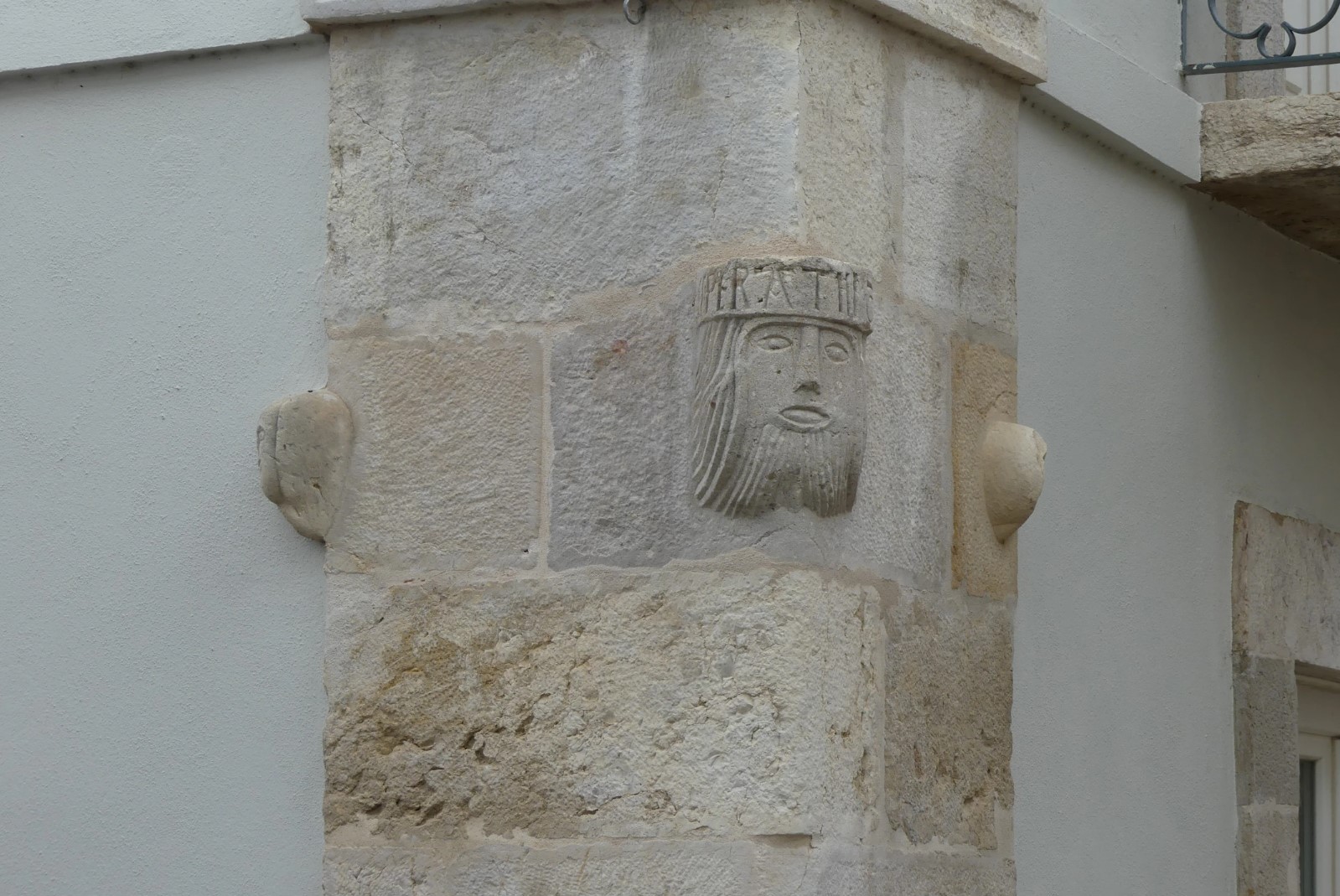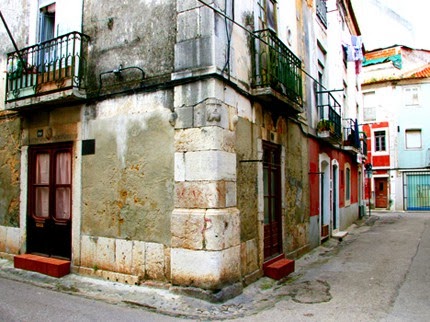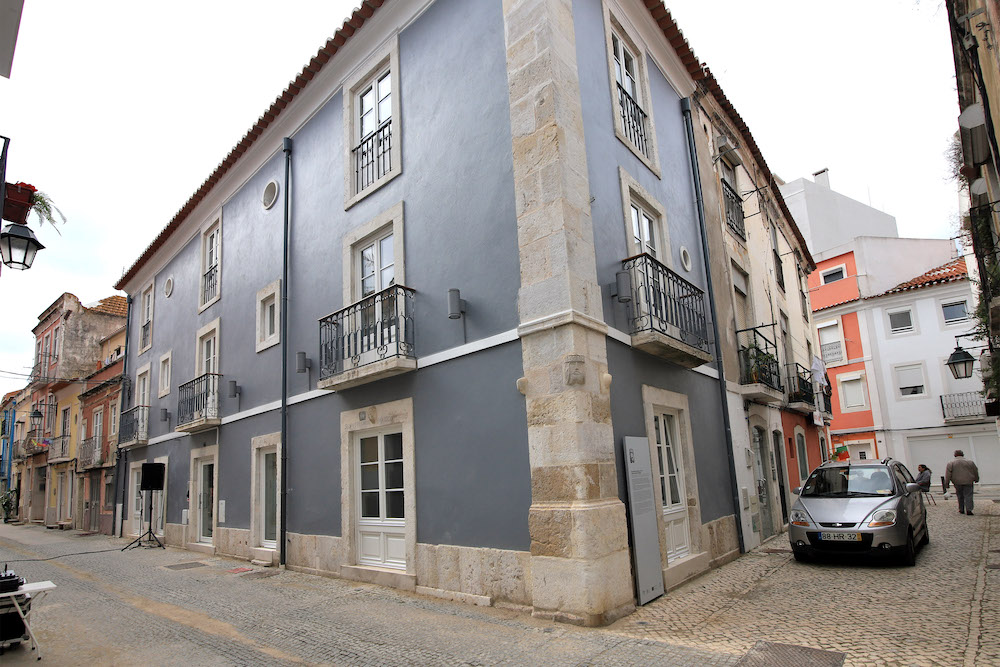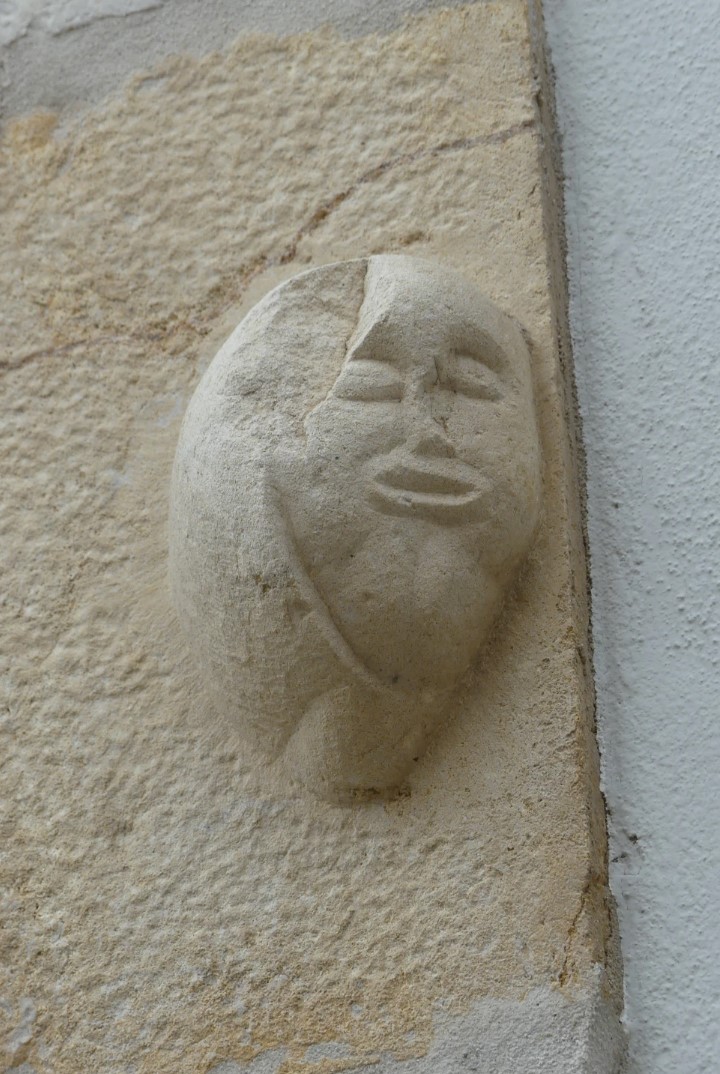Versão portuguesa aqui.
GPS 38.5244191077699, -8.89529832270449
Standing out in the respective corner, under the stone impost that separates the ground floor from the upper floor, are three carved heads.

The largest appears as if underlined by a scroll on which is the following Latin inscription: “ESPER ATHE DEO” [I hope in God]. On the lintel of the door with the police number 44 on Rua Fran Pacheco is another head with the inscription, also in Medieval Latin: “SIDeus pro nobis quis contra nos” [If God is with us, who can be against us].

The sculptural ensemble of controversial interpretation has traditionally been linked to the assassination attempt on King João II (king between 1481 and 1495), when he was walking in the Corpus Christi procession, on 22 August 1484.
The attack was plotted by his brother-in-law D. Diogo, Duke of Viseu, who, after being discovered, was killed by the monarch himself.

The historic Casa das Quatro Cabeças Reabe as accommodation, after a thorough restoration led by the City Council, which included the restoration and conservation of the facade of the building, which is more than five centuries old.

The reopening of Casa das Quatro Cabeças, a property of Municipal Interest since 1977, located in the historic center of the city, in the Troino neighbourhood, put an end to the scenario of degradation and abandonment, now serving as an extension of Casa do Largo – Youth Hostel.
Located on the corner between Rua Fran Paxeco and Travessa do Carmo, Casa das Quatro Cabeças was used, for several years, as a rented house, having not been maintained in any way by the successive owners.
“It was essential to preserve and reclassify this strong element of Setúbal’s identity”, stressed the mayor, stressing that, “with the structural integrity compromised, and in view of the lack of habitable conditions, the City Council requested, as a matter of urgency, , the declaration of public utility of the expropriation of the property and the respective administrative possession”.
The process was, therefore, long and the intervention global, including the reconstruction of the interior and the rehabilitation and preservation of the exterior of a building with more than five centuries of history and famous for the four heads carved at different points of the facade.
Prior to rehabilitation, an archeology team from the municipality carried out study and research work on the interior and exterior of the three-storey property.

The legend that justifies the four heads sculpted on the façade, which give the building its name, gained real strength over the years, believing that the small sculptures refer to the frustrated attempt at regicide that, in that same area of the city, had place against D. João II.
History says that the only intact head at the end of this episode was that of the monarch, ending up with the four protagonists, including the king, chiseled in stone, in a kind of eternal pedagogy.